Gear Reviews
Gear Impressions and Luthier Spotlight With Jake Wolf: Acme Systems Low B-112 Cabinet
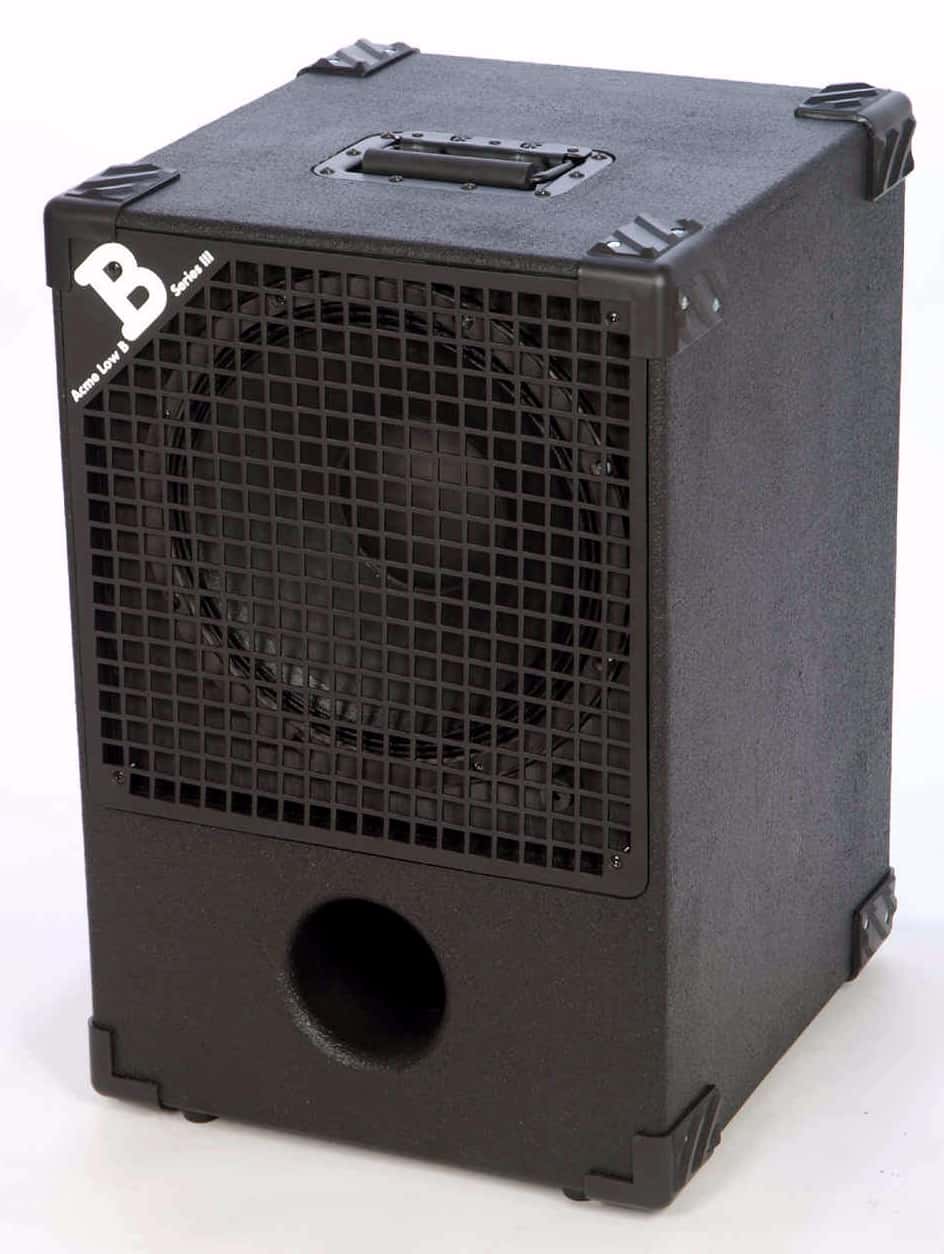
Email Jake | Read More Reviews
Acme Low B-112 “Flat Wound” System
Frequency Response: 31 Hz to 4 kHz
Sensitivity: 91.1 dB 1 watt/1 meter
Size: 23 x 15.75 x 16.5 (D) inches
Power handling: 350 watts RMS
Loading Method: Helmholtz Resonator
Recommended amplifier power: 400-500 watts
Impedance: 4 or 8 ohms
Weight: 37 lbs
Accepts Neutrik Speakon and/or 1/4” plug

Acme’s series II bass cabs have long been revered by loyal users, especially by the sub-happy bottom dwellers and those valuing natural fullness and depth over hyped treble response. His new series III cabs include such refinements as improved bracing (incorporating the port itself into the actual bracing mechanism for example, which Lewis says allows the cab to be lighter and stronger), quieter ports (Lewis states that rounding the edges on the internal port opening also makes the box stronger, and makes the port operate more quietly at higher volume), new finish, and new hardware. Never before has there been an Acme cab available with 12” drivers, nor one with neo speakers. As the “flatwound system” moniker implies, this cabs strength lies in the lower portion of the tonal scale. Not exactly a subwoofer as some might be inclined to think, the cab is designed around the parameters of its proprietary Eminence driver, optimized and tuned to squeeze the greatest low end performance out of a small-ish 1×12 loaded enclosure. The cab utilizes Acme’s duratex finish, which felt rugged and road worthy, and I appreciated its durable, high quality hardware.

As with Acme’s earlier cabs, to get the best performance out of the Low B-112, a higher than usual power requirement is needed. Many Series II users lament the performance of their cab only to discover a hidden beast that reveals itself when the cab is fed a high amount of headroom. Luckily, Acme’s great owners manual and website covers this topic thoroughly. Speaking of which, the cabs included literature was a totally refreshing and pleasant read. A nice departure from both the hype driven “magazine ad” style info sheet, or the dry and sterile “spec sheet only” type literature, Acme’s manual was chock full of easily understood suggestions and useful info that are sure to help the end user get the most out of the cab.
One of the coolest thing about the Low B-112 is the “booty to schlep” ratio (you heard it here first folks). I’d be hard pressed to mention a cab with this much boom that was as easy to move. I loved the top mounted handle. Spring loaded and feeling very sturdy, my only gripe was with its raised profile. This might be problematic for proper seating of some heads, especially the modern lightweight variety. My Mark Bass LMII teetered a bit on the handle, rather than sitting squarely on its four rubber feet. (Acme responds: when designing a loudspeaker to provide great sound, the challenge is to find a way to install a handle that doesn’t detract from the sound, and “does the patient no harm”. As stated in the manual, there is a great advantage to placing a large mass on the cab anyway, to stabilize the system, and anchor it to the floor. the handle offers a subtle hint that you might want to put a heavy equipment rack, small child, or other massive object on top, and then place your featherweight amp on top of that.”)
Acme points out that in the near future, this cab will be available with an optional co-axial tweeter, or as an easily installed upgrade to an existing Low B-112, (one that promises to be easily done by the customer themselves with a minimum of effort or technical knowledge).
More info is available on Acme’s website http://www.acmebass.com/ which also features hours of useful and interesting reading and educational material. MSRP for the Low B-112 is $499
Jake Wolf welcomes your comments and questions… drop him a line
Gear Reviews
Gear Review: Joyo Monomyth – A Versatile Modern Bass Preamp
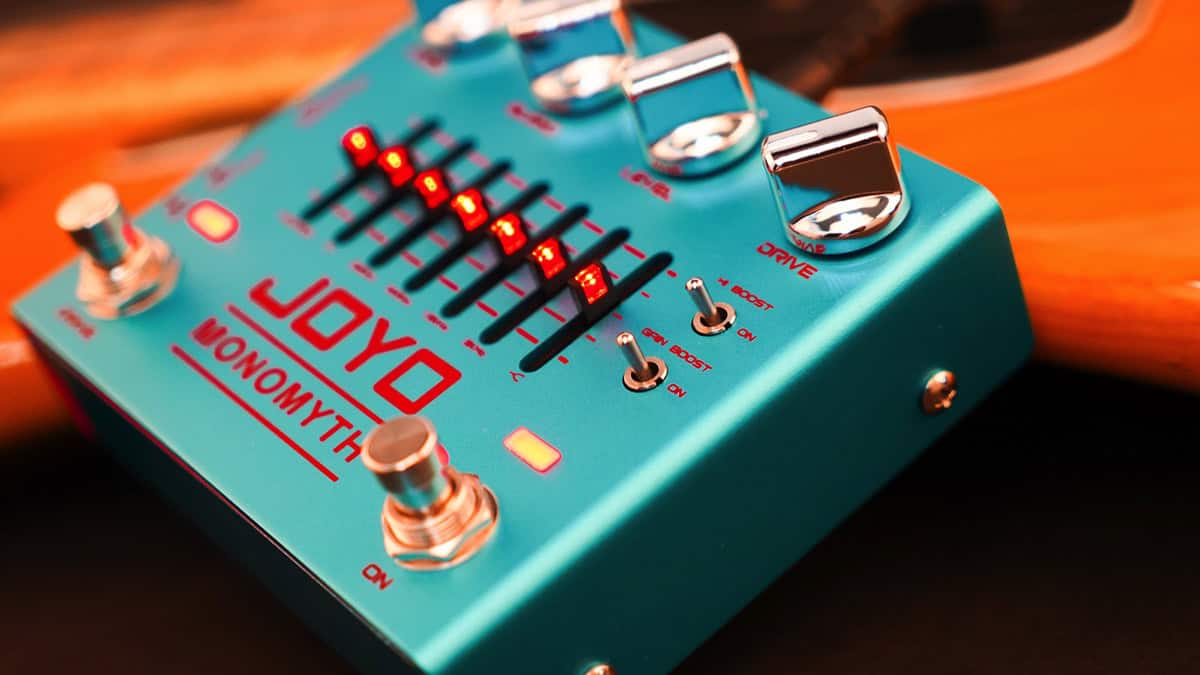
Disclaimer: This pedal was kindly provided by Joyo for the purpose of this review. However, this does not influence our opinions or the content of our reviews. We strive to provide honest, unbiased, and accurate assessments to ensure that our readers receive truthful and helpful information.
Introduction:
The Joyo Monomyth bass preamp pedal is designed to offer bassists a comprehensive range of tonal options, combining modern features with practical functionality. With independent channels for EQ and overdrive, as well as useful additions like a cab sim and DI output, the Monomyth aims to be a versatile tool for both live performances and studio sessions. This review will delve into the pedal’s specifications, controls, and overall performance to determine if it lives up to its promise of delivering quality and flexibility at an affordable price.
Specifications:
– Dimensions: 130 * 110 * 50 mm
– Weight: 442g
– Working Voltage: DC 9V
Controls:
The Joyo Monomyth is equipped with a comprehensive set of controls designed to provide maximum tonal flexibility:
– Voice: Adjusts the character of the overdrive, from distortion to fuzz.
– Blend: Balances the dry and effected signals, crucial for maintaining low-end presence.
– Level: Sets the overall output volume.
– Drive: Controls the amount of gain in the overdrive channel.
– Treble Boost: Enhances high and mid frequencies for clarity in complex passages.
– Gain Boost: Adds extra gain, particularly effective at low gain settings to enhance the low e.
– EQ Function Controls: Features a 6-band graphic EQ plus a master control for precise nal shaping.
– Ground Lift Switch: Helps eliminate ground loop noise.
– Cab Sim Switch: Activates a simulated 8×10″ cab sound.
– LED Light Control: Customizes the pedal’s ambient lighting.
Performance:
The Joyo Monomyth shines in its dual-channel design, offering both a transparent EQ channel and a versatile overdrive channel. The 6-band EQ allows for detailed tonal adjustments, preserving the natural character of your bass while providing ample flexibility. The voice control mimics the functionality of the Darkglass Alpha Omega, shifting from distortion to fuzz, with a sweet spot around the middle for balanced tones.
The blend control is essential for retaining the low end when using distortion, ensuring your bass remains powerful and clear. The treble and gain boosts, available on the overdrive channel, further enhance the pedal’s versatility, making it suitable for everything from subtle drive to full-blown fuzz.
Outputs are plentiful, with a DI and XLR out for direct recording or ampless setups, and a headphone out for convenient practice sessions. The cab sim switch adds a realistic 8×10″ cab sound, enhancing the Monomyth’s utility in live and studio environments.
Pros:
– Versatile Control Set: Offers a wide range of tones, from clean to fuzz.
– Blend Control: Maintains low-end presence.
– Robust Outputs: DI, XLR, and headphone outs make it adaptable for various setups.
– Affordable: Provides high-end functionality at a budget-friendly price.
– Sturdy Construction: Durable build quality ensures reliability.
Cons:
– Plastic Knobs: May feel less premium compared to metal controls.
– Boosts Limited to Overdrive Channel: Treble and gain boosts do not affect the EQ channel.
– Cab Sim only on the XLR out: how cool would it be to also have it on the headphone out?
Conclusion:
In conclusion, the Joyo Monomyth stands out as a versatile and powerful bass preamp pedal, offering a range of features that cater to both traditional and modern bassists. Its dual-channel design, comprehensive control set, and robust output options make it a valuable tool for achieving a wide spectrum of tones, from clean and warm to heavily distorted. For bassists seeking flexibility, reliability, and excellent value, the Joyo Monomyth is a top contender.
For more information, visit online at joyoaudio.com/product/267.html
Gear Reviews
Gear Review: Joyo Double Thruster – Modern Bass Distortion Redefined
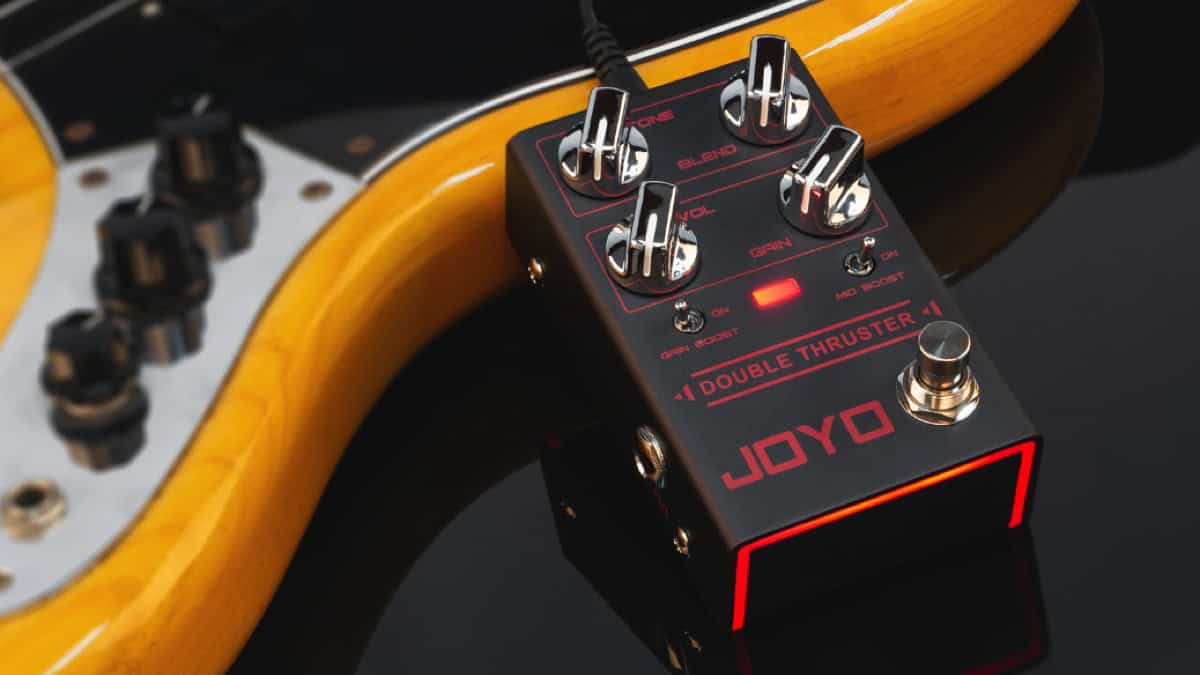
Review of the Joyo Double Thruster…
Disclaimer: This pedal was kindly provided by Joyo for the purpose of this review. However, this does not influence our opinions or the content of our reviews. We strive to provide honest, unbiased, and accurate assessments to ensure that our readers receive truthful and helpful information.
Introduction: When it comes to bass distortion, finding a pedal that delivers a wide spectrum of tones while maintaining the essential low end can be challenging. The Joyo Double Thruster, a modern bass distortion pedal designed to cater to the diverse needs of bassists was a pleasant surprise that we had the opportunity to review. From subtle overdrive to full-on fuzz, the Double Thruster delivers with versatility and affordability.
Specs: The Joyo Double Thruster is compact yet robust, making it ideal for both stage and studio use. Here are its key specifications:
Dimensions: 109 * 72 * 48 mm
Weight: 250g
Working Voltage: DC 9V
Controls: The Double Thruster features a comprehensive control set that allows for precise tonal sculpting:
Tone: Adjusts the overall tonal character of the distortion.
Blend: Critical for bassists, this control blends the dry signal with the distorted signal, ensuring the low end remains intact.
Volume: Sets the output level of the pedal.
Gain: Controls the amount of distortion, from mild overdrive to full fuzz.
Gain Boost Switch: Provides a noticeable boost, especially at lower gain settings, enhancing the low end and adding depth to the tone.
Mid Boost Switch: Boosts mid frequencies, helping the sound cut through the mix with greater clarity and definition.
LED Light Control: Customizes the ambient lighting of the pedal.
Performance: The Joyo Double Thruster excels in delivering a range of distortion tones while retaining the essential low end that bassists need. The blend control is particularly useful, allowing users to mix the clean and distorted signals to maintain clarity and punch. The gain boost switch adds a pleasing depth to the low end, especially noticeable at lower gain settings, while also compensating for low end loss at higher gain levels. The mid-boost switch enhances the pedal’s ability to cut through complex mixes, making it ideal for intricate playing.
In terms of versatility, the Double Thruster can emulate a variety of distortion sounds, from subtle warmth to high-mid, djenty grind. This makes it an excellent tool for bassists exploring different genres and styles.
Pros:
- Blend Control: Essential for retaining the low end in a distorted signal.
- Size and Weight: Compact and sturdy design.
- Rugged Construction: Durable build quality.
- Gain and Mid Boosts: Adds versatility and clarity to the tone.
- Affordable Price: Offers excellent value for money.
Cons:
- Plastic Knobs: May feel less premium compared to metal controls.
- Comparison to High-End Pedals: While close, it may not fully match the tone of more expensive pedals like the Darkglass B3K, and that’s ok. The Double Thruster is a great pedal on its own!
Conclusion: In conclusion, the Joyo Double Thruster stands out as a versatile and affordable option for bassists seeking a wide range of distortion tones. Its thoughtful design and comprehensive controls make it a great tool for achieving everything from mild overdrive to full fuzz, all while maintaining the crucial low end. For bassists looking to expand their tonal palette without breaking the bank, the Joyo Double Thruster is a must-have addition to their pedalboard.
Visit online at joyoaudio.com
Bass Videos
Review: Minuendo Lossless Earplugs Live 17dB
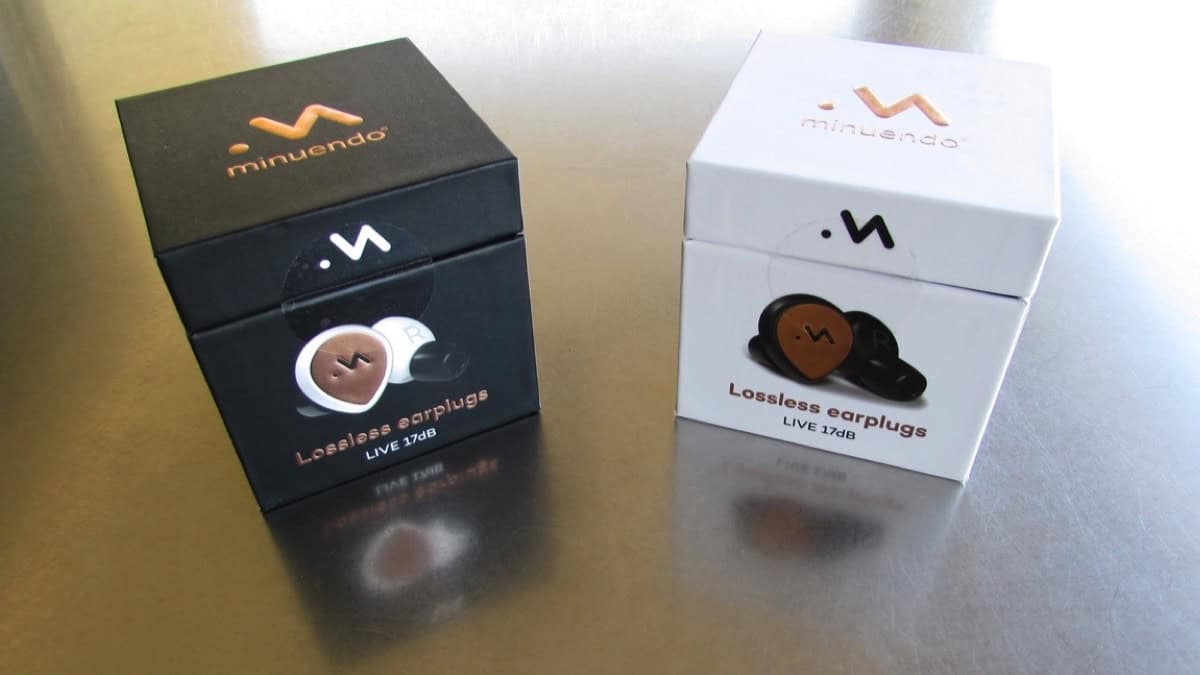
Minuendo Lossless Earplugs Live 17dB…
Minuendo Lossless Earplugs Live 17dB – Hearing protection has always been front and center on my mind because I love music so much, I cannot imagine my life if I were unable to hear.
You might remember back in 2021, we had a good look at the Minuendo Lossless Earplugs featuring adjustable protection. This system has a lot of very good features but there was always the question of how much sound attenuation to choose.
Now, the great folks at Minuendo have come up with a new version of their earplugs that has a set 17dB noise reduction. You still get a lot of the great features of the adjustables but you just don’t have to think about the specific sound level. In addition, this new version of earplugs comes at a very attractive price point.
For more information, visit online at Minuendo.com
Gear Reviews
Review: Joyo Tidal Wave Preamp
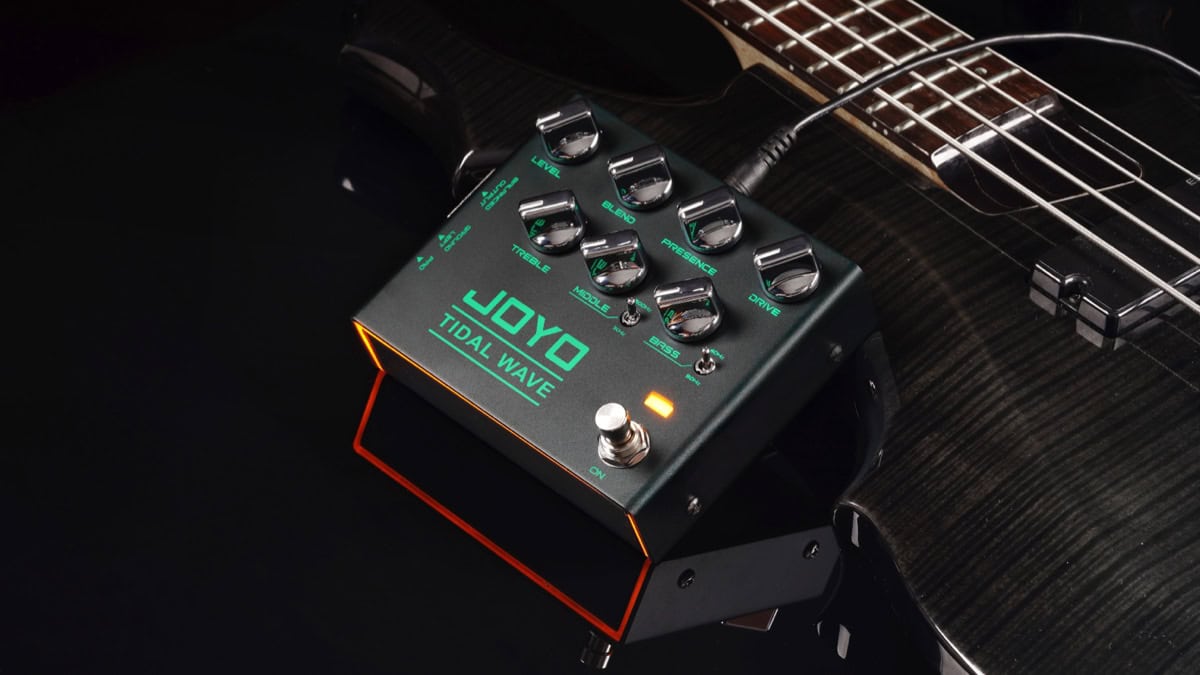
Joyo Tidal Wave Preamp: A Tribute to 90’s Iconic Sounds
Disclaimer: This pedal was kindly provided by Joyo for the purpose of this review. However, this does not influence our opinion or the content of our review. We strive to provide honest, unbiased, and accurate assessments to ensure that our readers receive truthful and helpful information.
In the realm of bass preamp/DI pedals, capturing the essence of iconic tones from the 90s can often feel like an elusive pursuit. However, the Joyo Tidal Wave Preamp emerges as a great option for bass players seeking to replicate the signature sounds of that era, particularly the revered tech21 SansAmp. With its robust feature set and compact design, the Tidal Wave offers a faithful homage to classic rock tones and low-gain distortions, all while providing modern conveniences for today’s bassist. Let’s delve into why the Joyo Tidal Wave stands out as a versatile and budget-friendly tool for both stage and studio.
Specs:
Measuring at 130 * 110 * 50 mm and weighing 442g, the Joyo Tidal Wave strikes a balance between portability and durability, making it ideal for gigging musicians and studio enthusiasts alike. With a power consumption of just 100 mA and a working voltage of DC 9V, the Tidal Wave ensures reliable performance in a variety of settings.
Controls:
At the heart of the Tidal Wave’s versatility lies its comprehensive control set, allowing bass players to sculpt their tone with precision. Key features include:
– Level: Sets the overall output volume of the pedal.
– Blend: Blends the dry signal with the cab-emulated signal, offering seamless integration of the pedal into any setup.
– Presence: Controls the dynamics of the high upper-mids, crucial for shaping drive tones.
– Drive: Introduces low-gain distortions and classic rock sounds into the clean tone.
– Treble, Middle, and Bass: Provides a 3-band EQ with frequency selectors for bass (40Hz – 80Hz) and mids (500Hz – 1KHz), offering ample control over tonal shaping.
– Middle Shift and Bass Shift: Allows for further fine-tuning of midrange and bass frequencies.
– Ground Lift: Helps eliminate ground loop noise in certain setups.
– DI Attenuation Switch: Adjusts the level of the DI output signal.
– LED Light Switch Control: Allows users to customize the ambient lighting of the pedal.
Performance:
True to its inspiration, the Joyo Tidal Wave excels in delivering classic rock tones and low-gain distortions reminiscent of the tech21 SansAmp. Whether you’re seeking gritty overdriven sounds or pristine clean tones, the Tidal Wave offers unparalleled flexibility and sonic versatility. The inclusion of a headphone out, XLR DI out with cab simulation, and throughout for the original bass sound make the Tidal Wave a versatile tool for both stage and studio applications. From practicing silently with headphones to crafting quality recordings in an ampless setup, the Tidal Wave delivers on all fronts with clarity, definition, and unmistakable character.
Pros:
The Tidal Wave boasts an array of advantages that set it apart from its direct competitors:
– Headphone Out: Transforms the pedal into a convenient practice tool.
– Size and Weight: Compact and lightweight design for easy transportation and setup.
– Rugged Construction: Durable build quality ensures longevity and reliability.
– DI and CabSim: Offers professional-grade direct recording capabilities with authentic cab simulation.
– Familiar Tones: Faithfully replicates the classic rock sounds of the tech21 SansAmp.
Cons:
While the Tidal Wave excels in many aspects, it does have a few drawbacks:
– Plastic Knobs: Knobs may feel less premium compared to pedals with metal controls.
– Cab Simulation Only on XLR Output: Limited cab simulation functionality may require additional routing for certain setups.
Conclusion:
In conclusion, the Joyo Tidal Wave Preamp stands as a testament to the enduring legacy of classic rock tones from the 90s. With its faithful homage to the tech21 SansAmp, comprehensive control set, and modern conveniences like headphone out and XLR DI with cab simulation, the Tidal Wave offers bassists a versatile tool for sculpting their sound with precision and finesse. Whether you’re seeking to replicate iconic tones from the past or forge new sonic territories, the Joyo Tidal Wave Preamp is sure to inspire creativity and elevate your playing to new heights.
Available online at Amazon.com
Gear Reviews
Review: Joyo Scylla Compressor
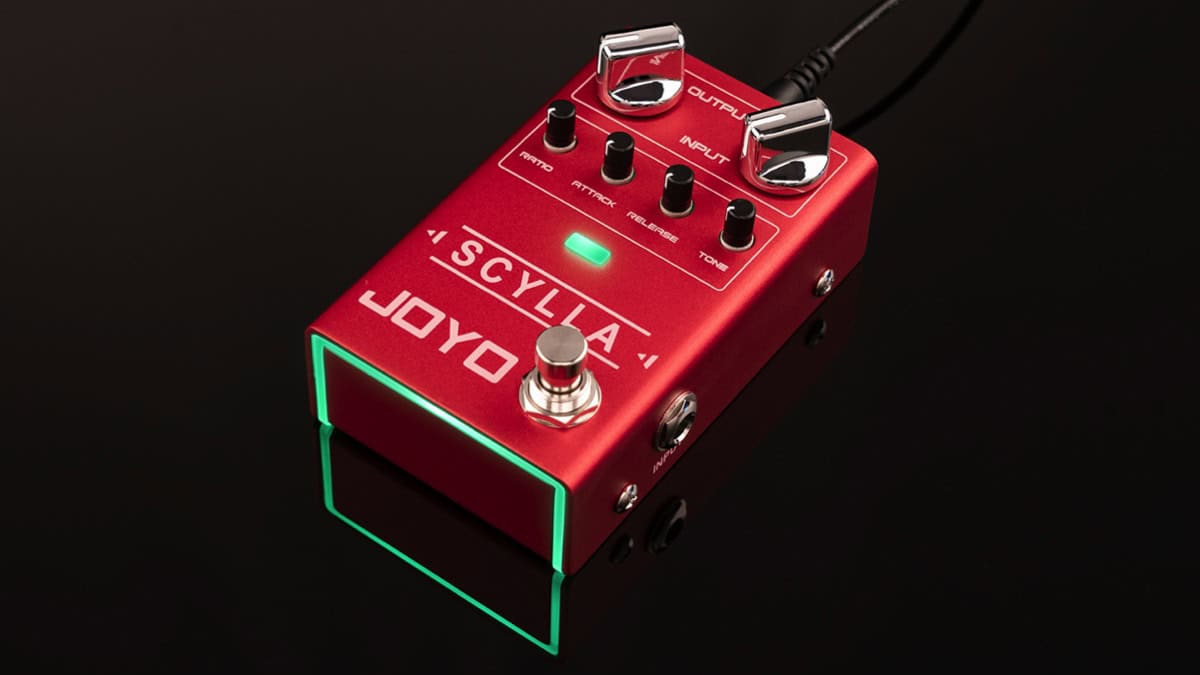
Joyo Scylla Compressor: When Quality meets Budget-Friendly
Disclaimer: This pedal was kindly provided by Joyo for the purpose of this review. However, this does not influence our opinion or the content of our review. We strive to provide honest, unbiased, and accurate assessments to ensure that our readers receive truthful and helpful information.
In the diverse landscape of effects pedals for bass guitar, finding a compressor that strikes the balance between performance, versatility, and affordability can often feel like a daunting task.
However, amidst the sea of options, one pedal stood out as a true diamond in the rough – the Joyo Scylla compressor. Despite its wallet-friendly price tag, the Scylla boasts a great array of features and controls typically reserved for pedals with much higher costs. Let’s take a closer look at why the Joyo Scylla is turning heads and earning praise among bassists on a budget.
Specs: The Joyo Scylla compressor measures in at 109 * 72 * 48 mm and weighs a mere 234g, making it both compact and lightweight – perfect for gigs or studio sessions where space is at a premium. With a power consumption of just 100 mA and a working voltage of DC 9V, the Scylla is efficient and versatile, compatible with a wide range of pedalboard setups.
Controls: What sets the Scylla apart from its direct competitors is its comprehensive control set, offering bassists a good amount of flexibility in shaping their sound. With six knobs, the Scylla allows for a very precise adjustment of key parameters:
- Input Gain: Adjusts the amount of signal being fed into the compressor.
- Output Volume: Controls the makeup gain after compression, ensuring consistent output levels.
- Compression Ratio: Unlike traditional compressor pedals with preset ratio options, the Scylla features a continuous knob, allowing for seamless adjustment from subtle compression to limiter-like effects.
- Attack and Release: Determine how quickly the compression engages and releases, offering a range of tonal possibilities from punchy and aggressive to smooth and subtle.
- Output Tone Control: A unique feature not commonly found in compressor pedals, the tone knob adjusts the coloration of the compressed signal, adding warmth or brightness to your bass tone.
- LED Light Switch Control: Allows users to customize the ambient lighting of the pedal, adding a touch of visual flair to their setup.
- Performance: In practice, the Joyo Scylla delivers where it matters most – in sound quality and performance. Whether you’re aiming for a tight, punchy bass sound or smooth, sustained notes, the Scylla excels in providing transparent compression that enhances your playing without sacrificing dynamics. The granular control offered by its knobs allows for precise tailoring of compression settings to suit a wide range of playing styles and musical genres.
- Pros: The Scylla’s strengths lie in its granular control, versatility, and compact design. Its sturdy build quality and diminutive size make it a welcome addition to any pedalboard, occupying minimal real estate without compromising on functionality. However, perhaps the most impressive aspect of the Scylla is its price point. Despite offering professional-grade features, the Scylla remains accessible to bassists of all budgets.
- Cons: While the Joyo Scylla excels in many areas, it’s not without its drawbacks. One notable omission is the lack of metering, which may pose a challenge for users seeking visual feedback on compression levels. Additionally, the plastic knobs, while functional, may feel somewhat less premium compared to other pedals.
- Conclusion: In conclusion, the Joyo Scylla compressor emerges as a great option in the world of budget-friendly effects pedals for bass guitar. Its comprehensive control set, transparent compression, and compact design make it a compelling choice for bassists seeking professional-grade performance without breaking the bank. From its intuitive interface to its thoughtful touches like the tone knob and customizable LED lighting, the Scylla delivers a level of versatility and functionality that belies its modest price tag. For bassists looking to elevate their tone without compromising on quality or affordability, the Joyo Scylla compressor is a clear standout.
For more information, visit online at joyoaudio.com/product/265.html



















